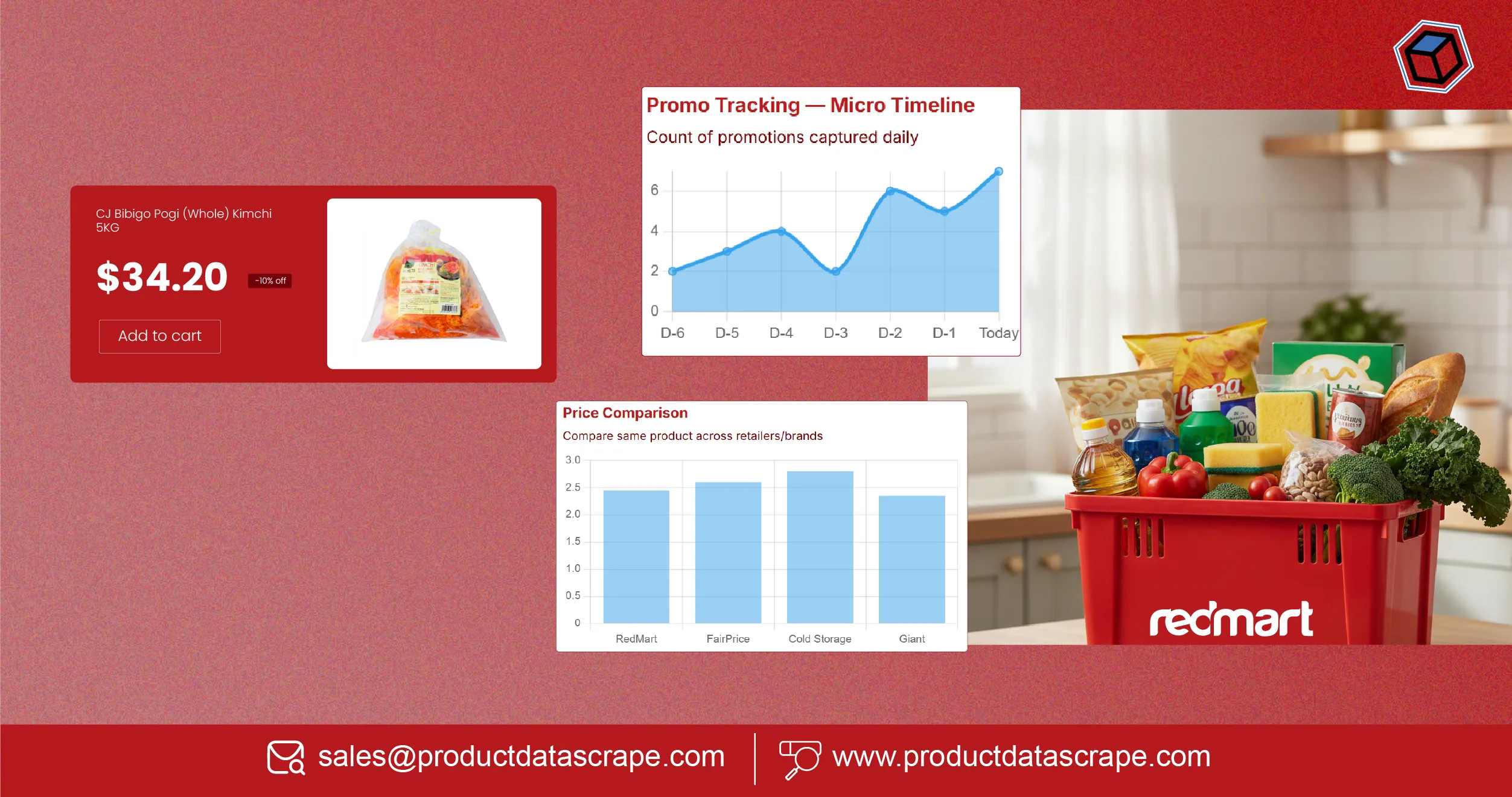
Introduction
In today’s fast moving e-commerce world, Real Time redmart Grocery Data Scraping for Singapore can be a game-changer. By extracting up-to-date product listings, inventory levels, and pricing from RedMart, businesses and analysts can make data-driven decisions that align with real consumer behavior in Singapore. In this blog, we’ll explore how to carry out such scraping effectively — and why it matters.
Understanding Singapore’s RedMart Landscape
![]()
RedMart, now part of Lazada, operates one of Singapore’s leading online grocery platforms. It boasts a massive Automated Fulfilment Centre that handles over 100,000 products. Between 2020 and 2025, the online grocery market in Singapore has shown strong growth: IGD projected that the grocery market would reach SGD 9.9 billion by 2023, driven heavily by RedMart. Meanwhile, RedMart’s own data operations, powered by real time analytics via AWS, help it track customer behavior and inventory dynamically.
| Year |
Estimated Online Grocery Growth / Key Metric |
| 2020 |
Surge in online grocery usage (pandemic impact) |
| 2021 |
Online supermarket sales ~14% of total for hypermarkets/supermarkets per Dept. of Stats |
| 2023 |
Online grocery market projected at SGD 9.9 billion |
| 2024–2025 |
RedMart continues to scale its infrastructure and data intelligence operations |
Real Time redmart Grocery Data Scraping for Singapore — Why It’s Powerful
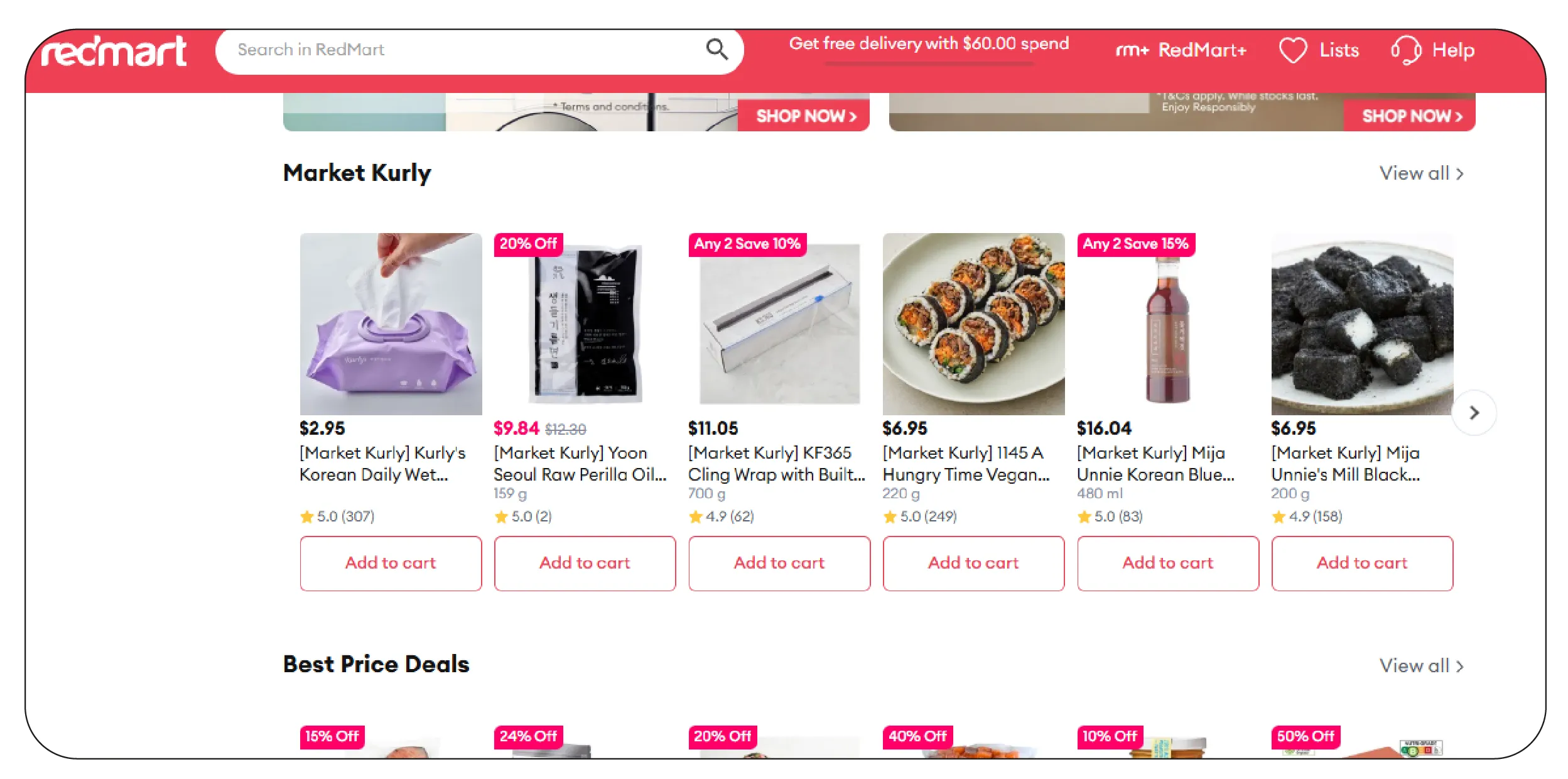
- With RedMart real time grocery inventory Data scraping, you capture live snapshots of stock levels, enabling dynamic decision-making (e.g., which SKUs are trending or running out).
- Such data helps you monitor price fluctuations in near real-time, so you can adjust your own pricing or promotional strategies.
- By scraping competitor inventory, you can stay ahead of supply chain risks and adjust procurement or marketing quickly.
Using RedMart Data Scraping for Grocery Product Listings
- A RedMart Data Scraper for Grocery Product Listings lets you extract structured data: product IDs, categories, pack sizes, brands, and images.
- Tools or APIs (commercial or custom-built) make it possible to schedule scraping at regular intervals, ensuring the data remains fresh.
- You can integrate this scraped data into your analytics dashboards to visualize trends or create predictive models.
How to Scrape Online RedMart Grocery Delivery App Data
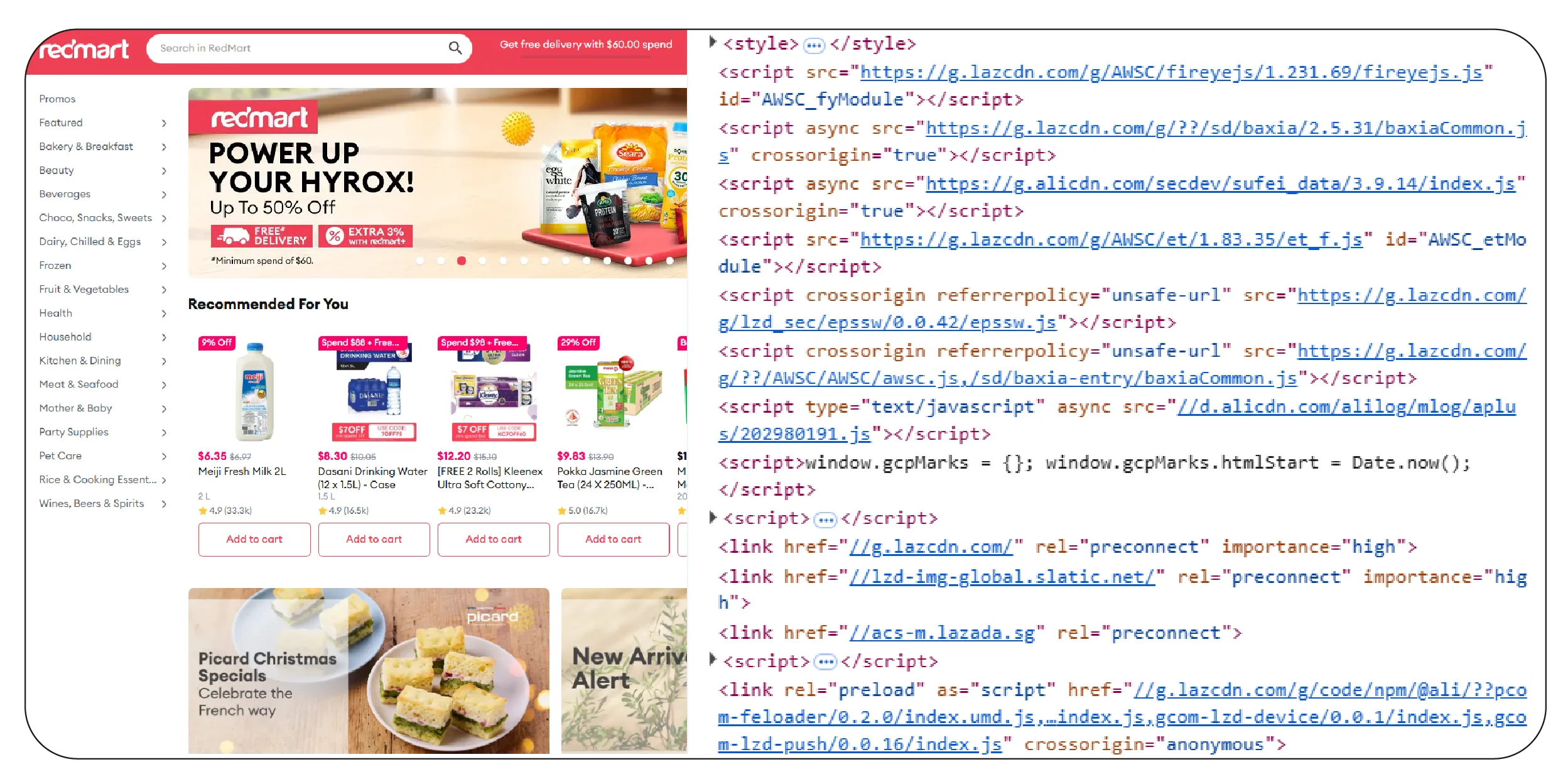
- Scraping Online RedMart Grocery Delivery App Data requires understanding of the RedMart web/mobile interface, including how pages are loaded (client-side vs server-side rendering).
- Use headless browsers or HTTP clients to fetch dynamic content; parse HTML/JSON to extract the info you need.
- Respect robots.txt / terms of service — ensure your scraping is ethical and legal; if available, prefer using an official or third-party API.
Extracting RedMart Online Supermarket Product Data
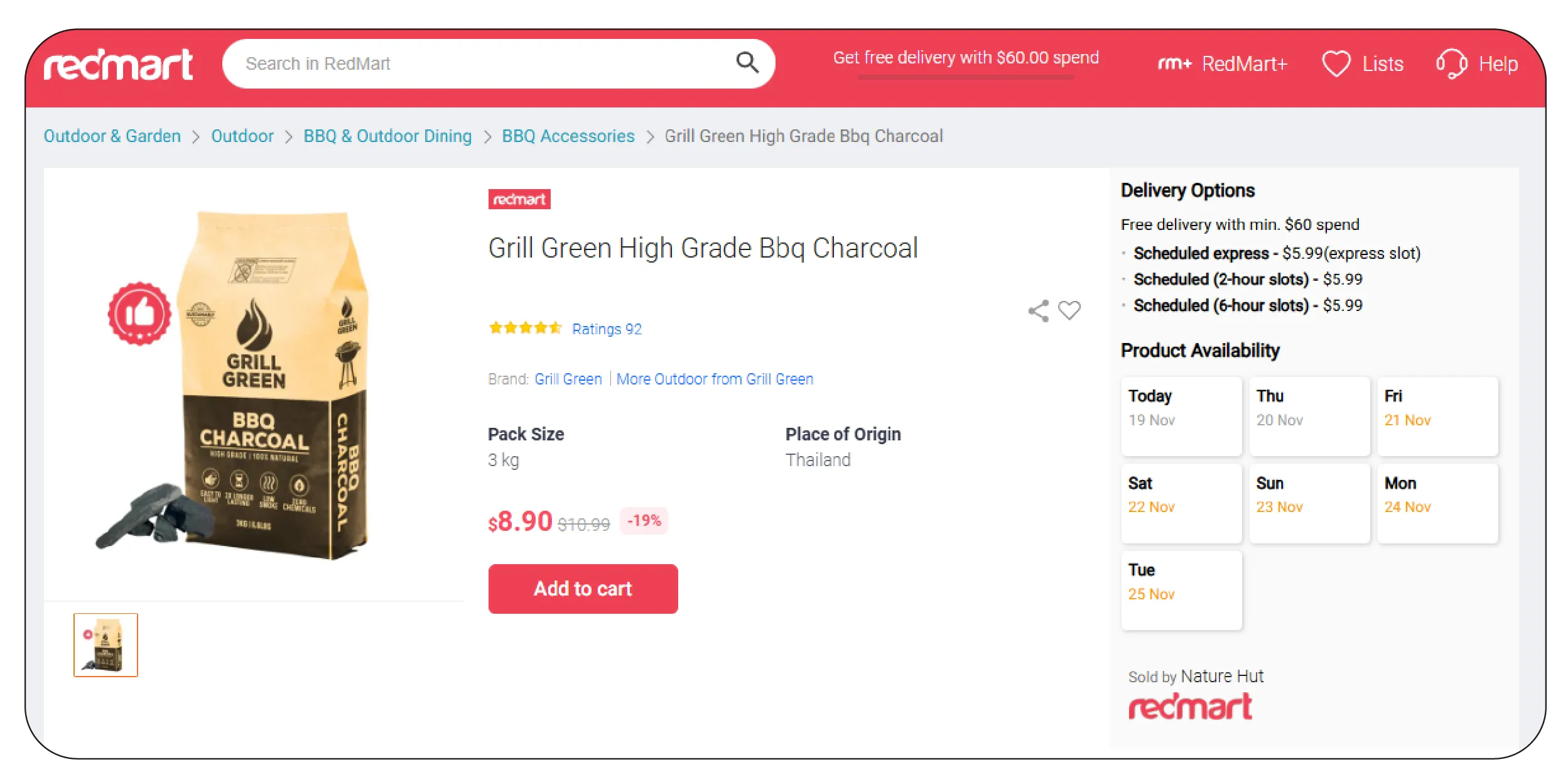
- With Extract RedMart online supermarket product data, you're not just pulling prices: you can also extract stock availability, delivery speed options, and product variations.
- For scalability, you can store scraped data in a database like PostgreSQL or MongoDB and keep historical snapshots for trend analysis.
- Use this data to analyze product assortment, discovering which categories (fresh produce, household, gourmet) are expanding or contracting.
Leveraging Web Intelligence API for Grocery Insights
- You can use a Web Data Intelligence API (or build your own) to continuously fetch and normalize RedMart data — feeding it into machine learning or BI tools.
- By ingesting scraped data via API, you unlock insights like price elasticity, SKU pacing, and promotion effectiveness.
- Such APIs can also enrich scraped data with external sources (e.g., competitor prices or macro economic indicators) to boost intelligence.
Building a Grocery Stores Dataset from Your Scraped Data

- When you Extract Grocery & Gourmet Food Data , combine RedMart product data into a broader grocery store dataset that tracks multiple channels or platforms.
- This aggregated dataset helps brands or retailers benchmark RedMart against offline retail or other online grocers.
- Use this dataset to run cohort analyses: which product lines are growing, which are hit by stock-outs, and which are being overlooked.
Why Choose Product Data Scrape?
- Accuracy & agility:Real time scraping ensures you’re not working with stale data — making your decisions faster and better informed.
- Competitive edge:By scraping RedMart and building a Web Scraping RedMart Quick Commerce Data pipeline, you can monitor competitors and react quickly to market shifts.
- Data-driven strategy:Instead of gut-feel, leverage actual consumer behavior and inventory trends to drive purchasing, marketing, and merchandising.
- Scalability:Once set up, the scraping architecture can scale across categories, geographies, or other retail platforms.
Conclusion
Implementing Real Time redmart Grocery Data Scraping for Singapore equips you with powerful insights into inventory, pricing, and consumer trends. By leveraging web scraping, data intelligence APIs, and structured datasets, businesses can make smarter, faster decisions — whether you're a CPG brand, retailer, or market analyst. Ready to unlock real time grocery intelligence and stay ahead of the competition? Let’s get started today.
FAQs
Is it legal to scrape RedMart data?
Yes — scraping publicly available data is generally legal, but you must respect RedMart’s terms of service and robots.txt. For commercial use, check if RedMart or third parties provide APIs to avoid breaching their policies.
How frequently should I scrape RedMart data?
It depends on your use case. For real-time inventory tracking, hourly or every few minutes might be ideal. For trend analysis, daily or weekly snapshots may suffice while minimizing server load.
Can I extract historical pricing data from RedMart?
Yes — if you store your scraped data over time, you can build a grocery store dataset that includes historical pricing, promotions, and availability, allowing your business to analyze long-term trends.
What tools or libraries work best for RedMart scraping?
Common choices include Python-based tools like Selenium, Playwright, or HTTP clients such as requests, combined with parsing libraries like BeautifulSoup or lxml. For structured API-like access, you might use Web Data Intelligence APIs or build one yourself.
How can scraped RedMart data help my business?
You can use the data to monitor competitor pricing, forecast demand, optimize inventory, run promotional analysis, and feed business intelligence tools — ultimately leading to more informed, data-driven decisions.






.webp)
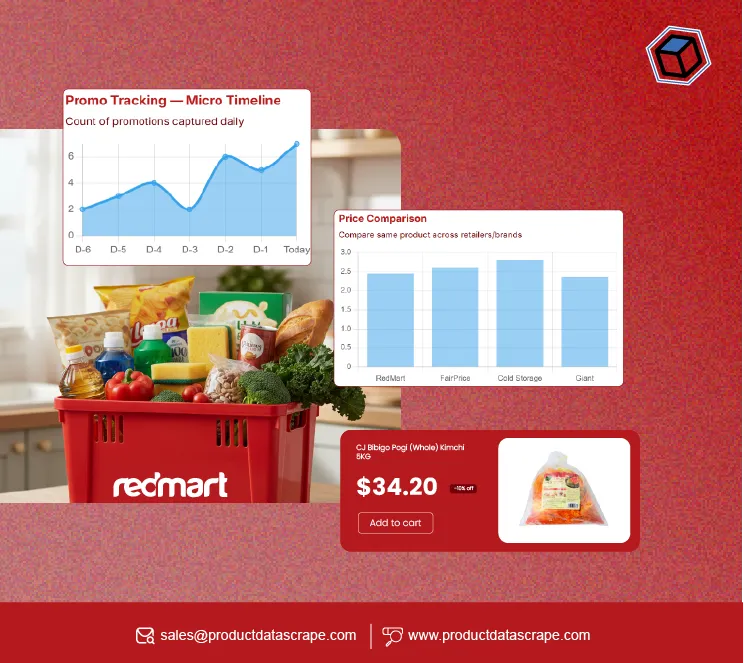

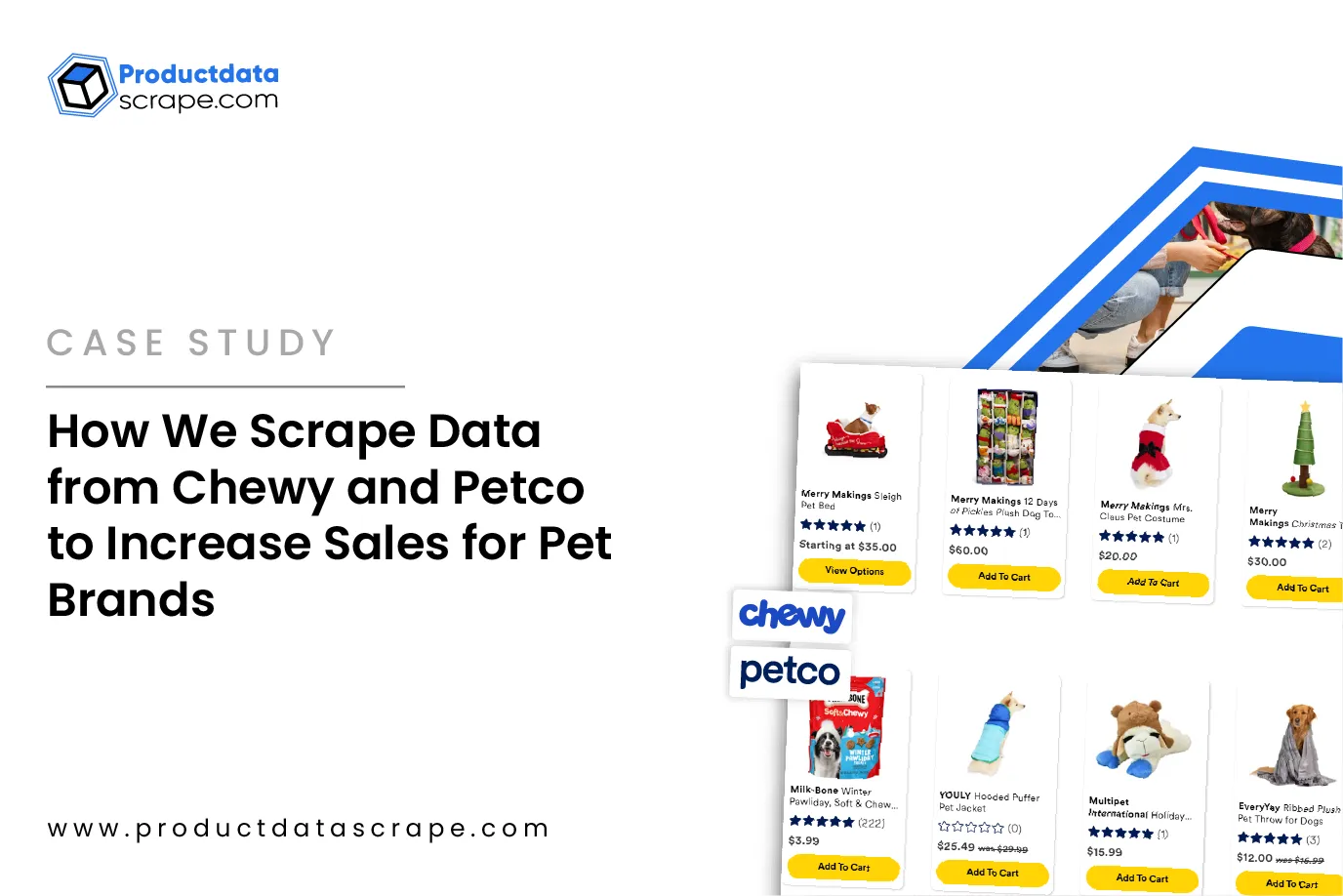










.webp)
-01.webp)

.webp)
.webp)
.webp)